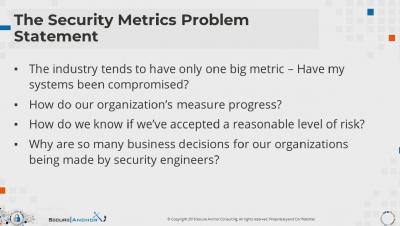Operations | Monitoring | ITSM | DevOps | Cloud
Analytics
5 Benefits to Run Elastic Stack in the Cloud
Elasticsearch, Logstash, and Kibana — the trio better known as Elastic Stack (or ELK, if you prefer a term that is now going out of style), make up a powerful set of tools for searching and analyzing data. Their power derives not just from their technical features, but also the fact that Elastic Stack is an open source platform that anyone can download and set up anywhere.
Cyber Security Metrics ft. Dr. Eric Cole
Elastic Stack Features (formerly X-Pack) Alternatives Comparison
Elastic Stack Features (formerly X-Pack) is an Elastic Stack extension that bundles security, alerting, monitoring, reporting, and graph capabilities. One could use either all or specific components.
BubbleUp Meets Tracing (and Other Odd-shaped Data)
A few weeks ago, BubbleUp came out of Beta. We’ve been getting fantastic user feedback on how BubbleUp helps users speed through the Core Analysis Loop and lets people find things they never could have found before. We’ve also been learning more about how BubbleUp works with Tracing, which unearthed some difficult issues. Today, we’re taking those head on.
We Tested Google Analytics vs Anodot - See Which Anomaly Detection Solution Won
A couple of months ago we released the all-new Anodot.com. Following the release, I explored our Google Analytics account to see what had happened post-launch. I have always been ambivalent about Google Analytics. On the one hand, the service has helped shape web analytics as we know it today and is used by nearly every website. Not to mention it’s free and rather easy to consume. On the other hand, GA is never a slam dunk.
Making sense of time-series analysis
Even if you haven't heard of data described as a "time-series," you've probably seen examples out in the wild. As the name suggests, a time-series is a representation of an event over a period of time. That could mean representing many different changes: your application usage data, such as error rates over time or the growing number of activations per day.
How to collect, customize, and analyze C# logs
C# logs can be an invaluable resource for optimizing application performance and debugging errors. But it’s not easy to extract the full potential of your logs if they’re not providing enough context around each error, or if they’re written in a format that’s difficult to parse.
Introducing Enhancements to the Logz.io Security Analytics App - RSA 2019
RSA 2019 is finally here and we’re super-excited to participate this year in this great gathering of security experts where we will be demoing Logz.io Security Analytics — our new app for helping organizations combat security threats and meet compliance requirements.
Managing Structured Data, Unstructured Data and the In-Between
There’s a lot of confusion surrounding the differences between structured and unstructured data. To better understand why, let’s review which data formats the industry currently is using, and some of the challenges they pose. Simply put, structured data typically refers to highly organized, stored information that is efficiently and easily searchable. Unstructured data is not.











